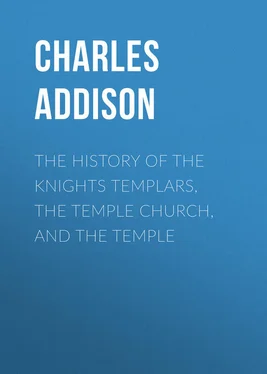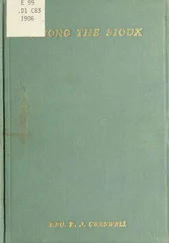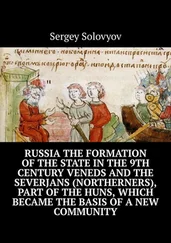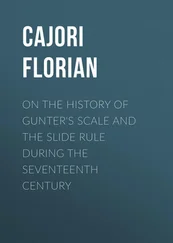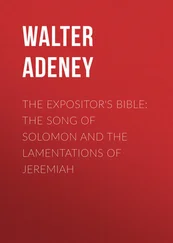Charles Addison - The History of the Knights Templars, the Temple Church, and the Temple
Здесь есть возможность читать онлайн «Charles Addison - The History of the Knights Templars, the Temple Church, and the Temple» — ознакомительный отрывок электронной книги совершенно бесплатно, а после прочтения отрывка купить полную версию. В некоторых случаях можно слушать аудио, скачать через торрент в формате fb2 и присутствует краткое содержание. Жанр: foreign_antique, foreign_prose, на английском языке. Описание произведения, (предисловие) а так же отзывы посетителей доступны на портале библиотеки ЛибКат.
- Название:The History of the Knights Templars, the Temple Church, and the Temple
- Автор:
- Жанр:
- Год:неизвестен
- ISBN:нет данных
- Рейтинг книги:5 / 5. Голосов: 1
-
Избранное:Добавить в избранное
- Отзывы:
-
Ваша оценка:
- 100
- 1
- 2
- 3
- 4
- 5
The History of the Knights Templars, the Temple Church, and the Temple: краткое содержание, описание и аннотация
Предлагаем к чтению аннотацию, описание, краткое содержание или предисловие (зависит от того, что написал сам автор книги «The History of the Knights Templars, the Temple Church, and the Temple»). Если вы не нашли необходимую информацию о книге — напишите в комментариях, мы постараемся отыскать её.
The History of the Knights Templars, the Temple Church, and the Temple — читать онлайн ознакомительный отрывок
Ниже представлен текст книги, разбитый по страницам. Система сохранения места последней прочитанной страницы, позволяет с удобством читать онлайн бесплатно книгу «The History of the Knights Templars, the Temple Church, and the Temple», без необходимости каждый раз заново искать на чём Вы остановились. Поставьте закладку, и сможете в любой момент перейти на страницу, на которой закончили чтение.
Интервал:
Закладка:
In the county of Essex they had the manors of Temple Cressynge, Temple Roydon, Temple Sutton, Odewell, Chingelford, Lideleye, Quarsing, Berwick, and Witham; the church of Roydon, and houses, lands, and farms, both at Roydon, at Rivenhall, and in the parishes of Prittlewall and Great and Little Sutton; an old mansion-house and chapel at Sutton, and an estate called Finchinfelde in the hundred of Hinckford. 129 129 Morant’s hist. Essex, Rymer. tom. iii. p. 290 to 294.
In Lincolnshire the Templars possessed the manors of La Bruere, Roston, Kirkeby, Brauncewell, Carleton, Akele, with the soke of Lynderby, Aslakeby, and the churches of Bruere, Asheby, Akele, Aslakeby, Donington, Ele, Swinderby, Skarle, &c. There were upwards of thirty churches in the county which made annual payments to the order of the Temple, and about forty windmills. The order likewise received rents in respect of lands at Bracebrig, Brancetone, Scapwic, Timberland, Weleburne, Diringhton, and a hundred other places; and some of the land in the county was charged with the annual payment of sums of money towards the keeping of the lights eternally burning on the altars of the Temple church. 130 130 Redditus omnium ecclesiarum et molendinorum et terrarum de bailliâ de Lincolnscire. Inquis. terrar. ut sup. fol. 41 b to 48 b and 49 a. Peck’s MS. in Museo Britannico, vol. iv. fol. 95 et seq.
William Lord of Asheby gave to the Templars the perpetual advowson of the church of Asheby in Lincolnshire, and they in return agreed to find him a priest to sing for ever twice a week in his chapel of St. Margaret. 131 131 Peck’s MS. ut sup. fol. 95.
In Yorkshire the Templars possessed the manors of Temple Werreby, Flaxflete, Etton, South Cave, &c.; the churches of Whitcherche, Kelintune, &c.; numerous windmills and lands and rents at Nehus, Skelture, Pennel, and more than sixty other places besides. 132 132 Inquis. ut. sup. 58 b to 65 b.
In Warwickshire they possessed the manors of Barston, Shirburne, Balshale, Wolfhey, Cherlecote, Herbebure, Stodleye, Fechehampstead, Cobington, Tysho and Warwick; lands at Chelverscoton, Herdwicke, Morton, Warwick, Hetherburn, Chesterton, Aven, Derset, Stodley, Napton, and more than thirty other places, the several donors whereof are specified in Dugdale’s history of Warwickshire (p. 694;) also the churches of Sireburne, Cardinton, &c., and more than thirteen windmills. In 12 Hen. II., William Earl of Warwick built a new church for them at Warwick. 133 133 Inquis. terrar. ut sup. fol. 12 a to 23 a. Dodsworth MS. vol. xx. p. 65, 67, ex quodam rotulo tangente terras Templariorum. Rot. 42, 46, p. 964. Dugd. Baron. tom. i. p. 70.
In Kent they had the manors of Lilleston, Hechewayton, Saunford, Sutton, Dartford, Halgel, Ewell, Cocklescomb, Strode, Swinkfield Mennes, West Greenwich, and the manor of Lydden, which now belongs to the archbishop of Canterbury; the advowsons of the churches of West Greenwich and Kingeswode juxta Waltham; extensive tracts of land in Romney marsh, and farms and assize rents in all parts of the county. 134 134 Monast. Angl. ut sup. p. 840. Hasted. hist. Kent.
In Sussex they had the manors of Saddlescomb and Shipley; lands and tenements at Compton and other places; and the advowsons of the churches of Shipley, Wodmancote, and Luschwyke. 135 135 Ex cod. MS. in officio armorum, L. xvii. fol. 141 a. Calendarium Inquis. post mortem, p. 13. 18.
In Surrey they had the manor farm of Temple Elfand or Elfante, and an estate at Merrow in the hundred of Woking. In Gloucestershire , the manors of Lower Dowdeswell, Pegsworth, Amford, Nishange, and five others which belonged to them wholly or in part, the church of Down Ammey, and lands in Framton, Temple Guting, and Little Rissington. In Worcestershire , the manor of Templars Lawern, and lands in Flavel, Temple Broughton, and Hanbury. 136 136 Manning’s Surrey. Atkyn’s Gloucestershire; and see the references in Tanner. Nash’s Worcestershire.
In Northamptonshire , the manors of Asheby, Thorp, Watervill, &c. &c.; they had the advowson of the church of the manor of Hardwicke in Orlington hundred, and we find that “Robert Saunford, Master of the soldiery of the Temple in England,” presented to it in the year 1238. 137 137 Bridge’s Northamptonshire, vol. ii. p. 100.
In Nottinghamshire , the Templars possessed the church of Marnham, lands and rents at Gretton and North Carleton; in Westmoreland , the manor of Temple Sowerby; in the Isle of Wight, the manor of Uggeton, and lands in Kerne. 138 138 Thoroton’s Nottinghamshire. Burn and Nicholson’s Westmoreland. Worsley’s Isle of Wight.
But it would be tedious further to continue with a dry detail of ancient names and places; sufficient has been said to give an idea of the enormous wealth of the order in this country, where it is known to have possessed some hundreds of manors, the advowson or right of presentation to churches innumerable, and thousands of acres of arable land, pasture, and woodland, besides villages, farm-houses, mills, and tithes, rights of common, of fishing, of cutting wood in forests, &c. &c.
There were also several preceptories in Scotland and Ireland, which were dependent on the Temple at London.
The annual income of the order in Europe has been roughly estimated at six millions sterling! According to Matthew Paris, the Templars possessed nine thousand manors or lordships in Christendom, besides a large revenue and immense riches arising from the constant charitable bequests and donations of sums of money from pious persons. 139 139 Habuerunt insuper Templarii in Christianitate novem millia maneriorum … præter emolumenta et varios proventus ex fraternitatibus et prædicationibus provenientes, et per privilegia sua accrescentes. Mat. Par. p. 615, ed. Lond. 1640.
“They were also endowed,” says James of Vitry, bishop of Acre, “with farms, towns, and villages, to an immense extent both in the East and in the West, out of the revenues of which they send yearly a certain sum of money for the defence of the Holy Land to their head Master at the chief house of their order in Jerusalem.” 140 140 Amplis autem possessionibus tam citra mare quam ultra ditati sunt in immensum, villas, civitates et oppida, ex quibus certam pecuniæ summam, pro defensione Terræ Sanctæ, summo eorum magistro cujus sedes principalis erat in Jerusalem, mittunt annuatim. — Jac. de Vitr. Hist. Hierosol. p. 1084.
The Templars, in imitation of the other monastic establishments, obtained from pious and charitable people all the advowsons within their reach, and frequently retained the tithe and the glebe in their own hands, deputing a priest of the order to perform divine service and administer the sacraments.
The manors of the Templars produced them rent either in money, corn, or cattle, and the usual produce of the soil. By the custom in some of these manors, the tenants were annually to mow three days in harvest, one at the charge of the house; and to plough three days, whereof one at the like charge; to reap one day, at which time they should have a ram from the house, eightpence, twenty-four loaves, and a cheese of the best in the house, together with a pailful of drink. The tenants were not to sell their horse-colts, if they were foaled upon the land belonging to the Templars, without the consent of the fraternity, nor marry their daughters without their license. There were also various regulations concerning the cocks and hens and young chickens. 141 141 Masculum pullum, si natus sit super terram domus, vendere non possunt sine licentiâ fratrum. Si filiam habent, dare non possunt sine licentiâ fratrum. Inquisitio terrarum, ut supr. fol. 18 a.
Интервал:
Закладка:
Похожие книги на «The History of the Knights Templars, the Temple Church, and the Temple»
Представляем Вашему вниманию похожие книги на «The History of the Knights Templars, the Temple Church, and the Temple» списком для выбора. Мы отобрали схожую по названию и смыслу литературу в надежде предоставить читателям больше вариантов отыскать новые, интересные, ещё непрочитанные произведения.
Обсуждение, отзывы о книге «The History of the Knights Templars, the Temple Church, and the Temple» и просто собственные мнения читателей. Оставьте ваши комментарии, напишите, что Вы думаете о произведении, его смысле или главных героях. Укажите что конкретно понравилось, а что нет, и почему Вы так считаете.
